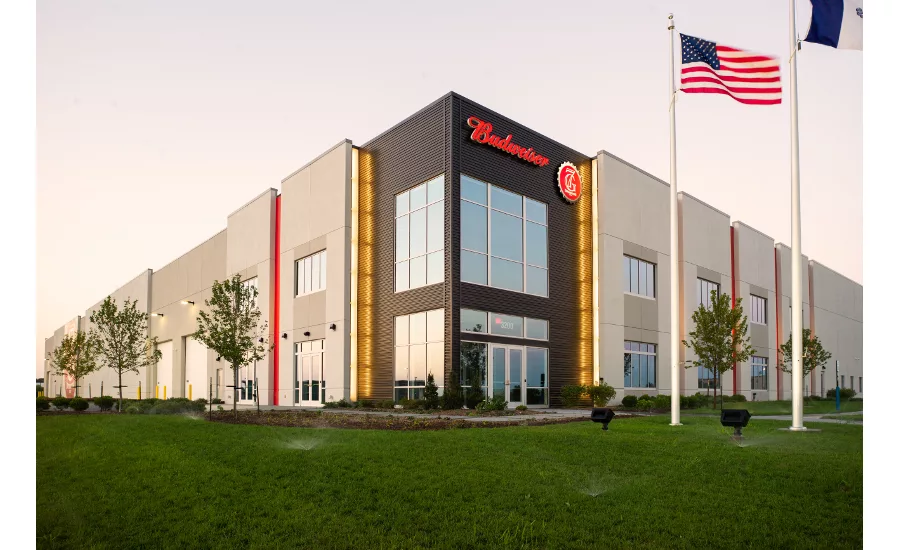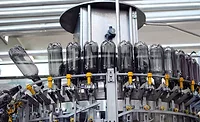Beverage plants implement sustainable practices
Lightweighting, water treatments help maintain energy use

The quote “buy less, choose well, make it last,” refers to consumers thinking and acting sustainably. However, when it comes to the health of our planet, an increasing number of beverage companies also are thinking and acting sustainably in an attempt to care for earth’s resources. Whether it’s lightweighting, treating wastewater and reducing general waste, beverage plants are changing their operational methods in order to be more energy efficient.
Roughly 75 percent of beverage companies are attempting to achieve some degree of sustainability in their facilities, compared with less than 10 percent 15 years ago, says Lloyd Snyder, senior vice president at Portland, Maine-based Woodard & Curran.
“[A] sustainable facility is one that produces their products in a manner that is favorable to sustaining the world, (replenishment, efficiency and reuse of materials and energy,” he says. “We see beverage plants focused on water reuse and waste minimization. Sustainable energy, [like solar power], does play a part but [is] much less significant. Water reuse can include collecting and treating wastewater, and harvesting and treating rainwater.”
Snyder attributes beverage plants’ sustainability efforts to three factors: consumers are more conscience of the environmental impacts of the products they buy; governments are creating incentives for sustainable production; and increased energy and raw material costs are prompting companies to look for waste minimization, energy efficiency and water efficiency, he says.
Lightweighting also is a common practice implemented by beverage companies. “Waste minimization can be done two-fold, by reducing the amount of material used in products through a process called lightweighting, or looking for innovative packaging designs that use less materials,” Snyder says.
“Within the production processes, more efficient equipment can often translate to less material loss and greater material efficiency,” he adds.
One trend prompting beverage companies to pursue sustainable facility goals is increased waste costs. “Plants are seeing increased cost for waste disposal, and zero waste methods can reduce [these] operational costs,” Snyder says. “There also are external stakeholders such as community groups pressuring facilities to reduce their impact on the local community infrastructure.”
“There is also pressure in drought stricken areas like California to use less water and zero waste can help reduce water needs,” he continues. “Beverage plants should focus on processes that discharge their waste to drains.”
Jack Holleran, principal at St. Louis-based HDA Architects, notes how saving on operational costs is a big draw for companies to increase their sustainability efforts. Investing in solar and wind power, high efficiency fixtures and equipment, thermal coding and green building designs are all ways companies can pursue sustainable facility goals, he says.
Moreover, companies can access their cleaning processes and make the necessary changes, Woodard & Curran’s Snyder says. “Other ideas include looking at packaging materials and finding ways to reduce the amount of materials used, like lightweighting,” he continues.
A greener tomorrow
Transitioning to a sustainable facility does not happen overnight, experts note. A plant can often transition to a sustainable facility in three to five years, depending on the aggressive nature of the material, water and energy efficiency plans, and the capital investment plan, Snyder says. Innovative analysis in cost savings need to be employed to better understand production processes on the environment, he explains.
Similarly, HDA’s Holleran notes that five years or less is the target goal for companies wishing to see a return-on-investment (ROI) from executing sustainability initiatives. He also notes that although many sustainable systems have a higher upfront cost, the lower ‘everyday’ costs will give companies a better ROI.
A common hesitation with implementing sustainable practices is the associated cost. However, as earth’s natural resources continue to come under pressure and costs rise, sustainable solutions and cost effective solutions will soon become synonymous, Woodard & Curran’s Snyder notes.
Previously, Leadership in Energy & Environmental Design (LEED) certifications were immensely popular, but experts note that LEED could be on its way out. “I would say the trend for LEED has reached its peak and actually is on the decline for manufacturing facilities,” Snyder continues. “LEED is not a measurement of sustainable practices for manufacturing processes; production is where sustainable practices are most impactful.”
Because not every facility has the means to operate with complete sustainability, beverage plants can implement several practices to get started. “For starters, switch out conventional lighting with LED lighting; less watts equals less energy used,” HDA’s Holleran says. “[You can also] switch to low flow toilets and sinks to save on water usage.” BI
Looking for a reprint of this article?
From high-res PDFs to custom plaques, order your copy today!







